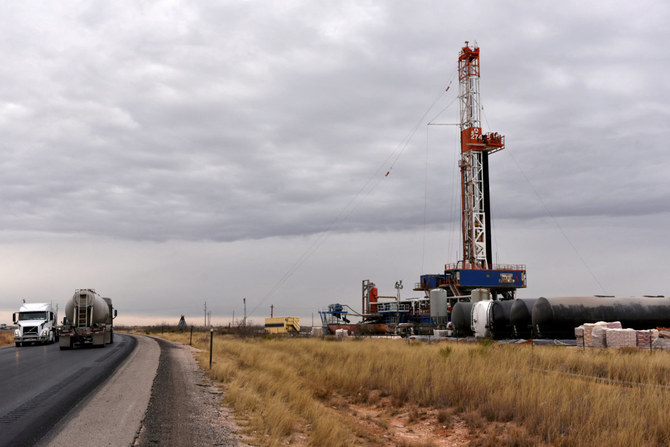
- ARAB NEWS
- 06 Jul 2025

Concerns about supply shortage amid the ongoing Russia-Ukraine war and rising political tensions continue to dictate oil market sentiments.
Moreover, expectations of policy support in China to mitigate the COVID-19 impact added upward pressure to oil prices. A highly volatile market influenced price movement amid uncertain supply and demand outlooks. Oil prices trended lower earlier in the week as the near-term supply outlook improved after the International Energy Agency announced an additional release of oil from strategic petroleum reserves, while the crude physical market showed signs of enough supply availability.
However, a mixed Energy Information Administration weekly report showing a large buildup in US crude stocks and a drop in product stocks had a limited impact on prices.
Global oil demand is not likely to recover to pre-pandemic levels as was previously projected. Indications have shown that the pace of demand recovery is still slow, with strong regional disparities reflecting differences in specific factors, such as economic growth, COVID-19-induced government policy responses, and geopolitical events. These factors weighed heavily on mobility and created supply chain bottlenecks, affecting the speed of the demand recovery.
Industries have reduced their demand forecast. The Organization of the Petroleum Exporting Countries’ outlook for April revised world economic growth in 2022. World demand growth was revised down by 0.5 million barrels per day to stand at 3.7 million barrels per day, while non-OPEC supply was down by 0.3 million barrels per day.
IEA believes that the US production will certainly benefit from higher prices, projecting US oil production to rise by 820,000 barrels per day to 12.01 million barrels per day in 2022.
The lockdown in Shanghai and over a dozen other provinces indicates that the Chinese leadership stands firmly behind its zero-COVID policy, possibly throughout 2022. Risks remain high during 2022, subject to COVID-19 developments, the pace at which herd immunity targets are met, as well as geopolitical developments, and tightening of monetary policies in an inflationary environment. These factors are expected to further impact oil demand in the short term.
IEA believes that the US production will certainly benefit from higher prices, projecting US oil production to rise by 820,000 barrels per day to 12.01 million barrels per day in 2022.
Mohammed Al-Shatti
The physical crude market could ease further in the coming weeks and the backwardation structure of the Brent futures curve will probably remain flat, due to large SPR releases expected to enter the market amid softening Chinese crude demand.
Low middle distillate stocks, specifically gasoil/diesel, in Europe and the US, along with the risk of exports from Russia, will continue to support middle distillate margins and overall refining economics in the short term.
Moreover, Oil market fundamentals remain tight, with crude and product stocks outside of China low, ongoing risk of no Iran deal, and uncomfortably low spare capacity to withstand any material supply loss. This is supporting prices.
The market is still not clear about how much the Russian oil production is impacted. Citibank projects Russian oil and condensate output to fall, averaging 9.8 million barrels per day in the second quarter of 2022 stabilizing at 10 million barrels per day over the second half of 2022 as trade flows readjust and then declining through 2023 as Russia loses access to foreign investments and technology. This will put a cap on price rise.
The market will be focusing on the possible outcome of the OPEC+ meeting on May 5. There is insufficient spare capacity to meet a significant near-term large disruption of Russian/Kazakhstan oil over 3 million barrels per day. Dislocations around changes in the offtake of Russian crude can be disruptive.